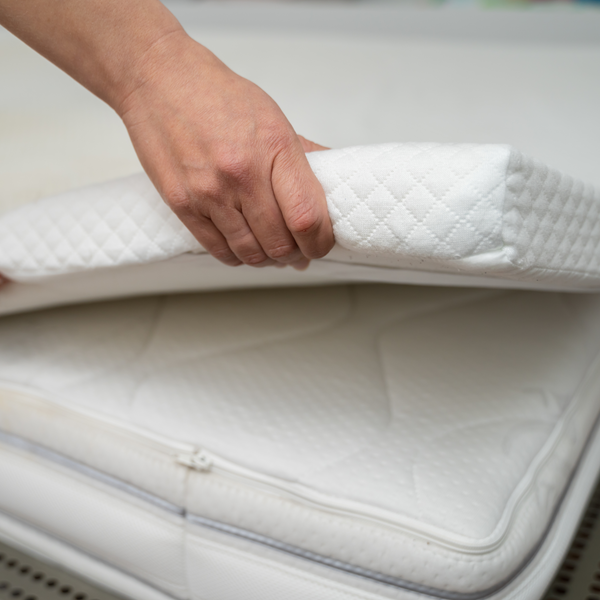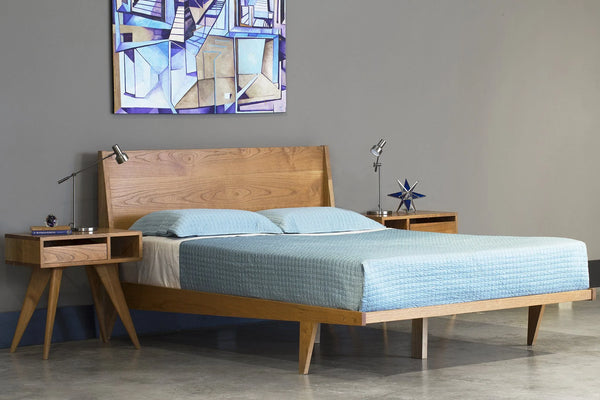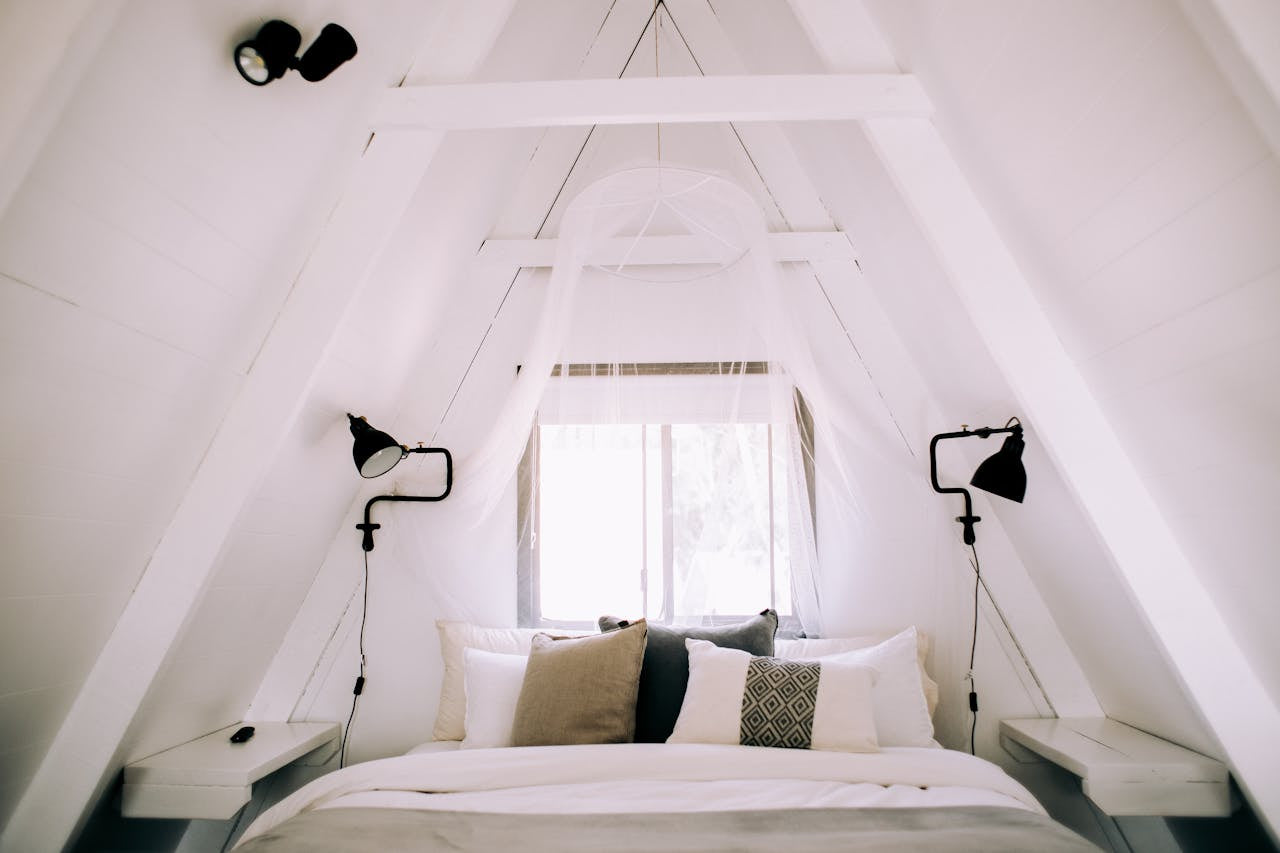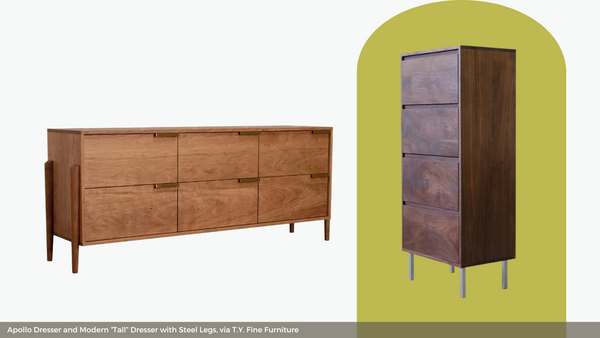Your bedroom is the one area in your home dedicated solely to rest and well-being. So, it is no surprise that you're paying special attention to this space right now—whether you're moving into a new house or simply upgrading your current bedroom. We're here to help.
There is no one-size-fits-all design for bedrooms, but it's a sensible move to prioritize comfort first. It all begins with choosing practical, functional furniture to support good sleep. Here's a breakdown of bedroom furniture essentials, as well as some important non-furniture and decor items to help you get started.
The Foundation: The Bed
A good night's sleep is essential for maintaining a healthy and productive life, and the key: a very comfortable bed.
As the heart of the bedroom, the bed isn't only where sleep, but it also stands as the centerpiece, from which you work around to create a restful environment. So, getting a good bed is the first and most important step.
Here are some factors to consider when choosing your bed:
Mattress
The most important features to consider when choosing a mattress are comfort, support, and temperature regulation. Pick a firmness that works with your sleeping position and body type. If you share a bed with a partner, a split king mattress with adjustable sides may be a good option.

Sleeping position
- Side sleepers: Look for a softer mattress, around a medium plush, that conforms to your curves and provides pressure point relief around your shoulders and hips.
- Back sleepers: A medium-firm mattress is ideal for back sleepers as it helps provide proper support for the spine.
- Stomach sleepers: A firm mattress is best for stomach sleepers, as it keeps the hips aligned with the spine and prevents the back from bowing.
Material
- Innerspring: Provides a traditional bounce and effective ventilation
- Memory foam: Provides comfort by molding to body shape and relieving pressure points, but may be warm to sleep in
- Latex: Offers excellent bounce and pressure relief, as well as natural breathability
- Hybrid or Layered: Offers a combination of materials, such as innerspring and memory foam, to provide both support and comfort
Knowing the features you need can certainly help with your purchasing decision. But if you can, seek guidance from an expert who can offer personalized options.
Check out our Organic Mattress Collection.
Bed Frame
When choosing a bed frame, it's important to match it with the mattress for optimal comfort. Also, consider factors such as height (for ease of access) and support features like slats or center legs.
The bed frame can greatly influence the overall look of your bedroom. So, it's important to carefully weigh your options before making a decision.
- Wood is a classic choice for bed frames due to its stability and sturdiness. It can be styled in traditional or modern designs and is easy to maintain. Opting for a natural hardwood bed may be pricier but offers a better return on investment.

- Metal bed frames, made of materials like steel and iron, are known for their sleek and modern appearance. They are durable, lightweight, and simple enough for disassembly and reassembly, which makes them a practical choice for people with limited spaces or who move frequently. However, it's worth noting that some metal frames may produce noise if not properly assembled.
- Upholstered bed frames are popular for their comfortable padding, providing a luxurious feel in the bedroom. The padded headboard is not only great for lounging and reading, but it also adds a touch of safety by preventing any accidental bumps. However, it may need a bit more cleaning and upkeep compared to other options.
Check out our collection of handmade solid wood bed frames.
Nightstands, Bed’s Loyal Friends
While nightstands may seem decorative or unnecessary, they are actually quite useful in creating a cozy and functional space. Not only do they tie the room's decor together, but they also provide convenient storage for all your late-night essentials. So, you have a space for a lamp, a book you're currently reading, a glass of water, and course, a little charging station, all within reach.
Choose nightstands that are proportional to the size of your bed and have enough surface space for your requirements. For a cohesive look, consider nightstands that complement the style or material of your bed frame. Going for a bedroom set, which includes a bed frame and bedside tables, is a safe option.
Dressers for Extra Storage
Most bedrooms come with a built-in closet. So, there’s a good chance that you already have quite a bit of storage for most of your clothes and other belongings. But having an extra piece of furniture to store items is convenient for any bedroom.
A dresser offers ample storage for folded clothes, bed sheets, and some off-season items. Here's what to consider when choosing a dresser:
- Storage Capacity: Choose a dresser with enough drawers to accommodate your wardrobe. Consider drawer sizes – some might be better suited for bulkier items like sweaters while others can store smaller essentials like socks and underwear.
- Style: Dressers come in a variety of styles – traditional with drawers, modern with sleek lines, or even mid-century modern with tapered legs. Pick one that complements your overall bedroom aesthetic.
Lighting to Set the Mood
Lighting is crucial for creating a relaxing bedroom ambiance. Consider using multiple layers of lighting, with one type for general illumination and another for focused areas.
- Ambient Lighting: This provides overall illumination. Consider ceiling lights, recessed lighting, or sconces on the wall. Choose dimmable options to adjust the brightness according to your needs.
- Task Lighting: Task lighting in the bedroom is meant to provide focused illumination without having to use harsh overhead lights that might disrupt sleep. Think of it as a spotlight for reading in bed, working on a laptop, or applying makeup. Options for task lighting include table lamps on nightstands, wall-mounted sconces by the headboard, or a floor lamp with an adjustable arm.
Finishing Touches: Rugs and Seating
These pieces add functionality and enhance the overall look of a bedroom, even though they are not strictly necessary.
- Armchair or Chaise Lounge: A comfy armchair or chaise lounge creates a perfect spot for reading, relaxing, or enjoying a cup of tea. Having a little spot like this in the bedroom can help you wind down before going to sleep.
- Desk or Vanity: Having a desk or vanity or both makes your bedroom a bit more functional. You have space to journal, finish some work, or do skincare and other bedtime rituals before sleeping. At best, they both offer spaces to keep things away from your bed, reducing clutter, and creating a more calming atmosphere in the rest of your bedroom.
- Ottoman or Bench: These versatile pieces offer additional seating at the foot of the bed and can also double as storage.
- Rugs: Rugs add texture and visual interest to your bedroom, and with the right materials, even make it cozier. They also help define spaces within a room. A large rug under the bed marks it as a resting area and a smaller rug under an armchair or vanity designates it as a spot for activity.
Personalizing Your Bedroom
Personalizing your dream bedroom is important to create a space where you can relax and recharge. Here are a few things that can help add a touch of your personality to your bedroom.
- Express yourself with art. Hang paintings, photographs, or tapestries that resonate with you. Let the colors and textures speak to your taste and spark joy.
- Breathe life with greenery. Bring in low-maintenance plants to add a touch of freshness to the space.
- Cozy up with textiles. Layer throw pillows and blankets in plush fabrics to create a more inviting ambiance. These items also allow you to easily adjust the aesthetic of the space based on your mood or season.

